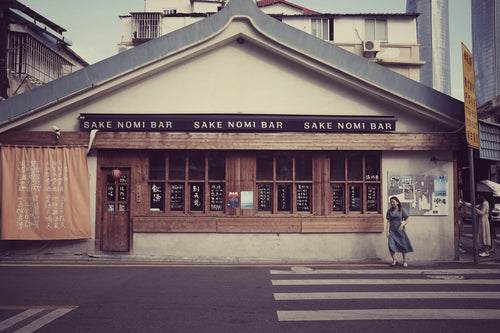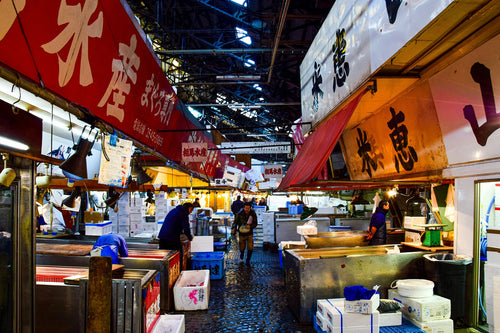
How to Order Ramen in Japan: From Noodle Firmness to Broth Choices
Ramen is one of Japan’s most beloved dishes, known for its flavorful broths, chewy noodles, and a wide variety of toppings. Ordering ramen in Japan can be an exciting experience, but the options may seem overwhelming to newcomers. From choosing your preferred noodle firmness to selecting the perfect broth, understanding these choices can enhance your ramen experience and help you enjoy this classic Japanese dish like a local.
This guide covers everything you need to know about ordering ramen in Japan, including popular broth types, noodle firmness, common toppings, and ordering tips to make the most of your meal.
Contents
1. Types of Ramen Broth
Ramen broth is the heart of the dish, and each type has a distinct flavor profile. Here are the four main types of ramen broth:
Shoyu (Soy Sauce)
Shoyu ramen is a soy sauce-based broth that is often clear and brown in color. It has a balanced, savory flavor that complements a variety of toppings. Originating from Tokyo, shoyu ramen is one of the most popular types in Japan, often served with sliced pork, green onions, and bamboo shoots.
Miso (Fermented Soybean Paste)
Miso ramen, originally from Hokkaido, features a rich, slightly creamy broth made from fermented soybean paste. This broth has a hearty and slightly sweet taste, making it a perfect choice during colder months. Miso ramen is commonly topped with corn, butter, bean sprouts, and green onions, reflecting Hokkaido’s local ingredients.
Shio (Salt)
Shio ramen is a lighter, salt-based broth that often appears clear and has a delicate flavor. It is usually made with chicken, fish, or seaweed, resulting in a mild yet savory taste. Shio ramen is often topped with lean pork, fish cakes, and vegetables, allowing the subtle flavors of the broth to shine.
Tonkotsu (Pork Bone)
Tonkotsu ramen, originating from Kyushu, is known for its thick, creamy, and rich broth made by simmering pork bones for hours. This process releases collagen and fats, creating a deep, umami flavor. Tonkotsu ramen is typically topped with green onions, pickled ginger, and sesame seeds, with slices of fatty pork that add to its richness.
2. Noodle Firmness Options
Noodle texture is a key part of the ramen experience, and many ramen shops allow you to choose your preferred firmness. Here are the most common levels of noodle firmness:
Yawa (Soft)
Yawa, or soft noodles, have a tender and slightly chewy texture. This option is ideal for those who prefer noodles that absorb more broth, resulting in a milder flavor experience.
Futsu (Regular)
Futsu, or regular firmness, is the standard noodle texture, offering a balanced bite that complements most broths. This is a good choice for first-time ramen eaters who want a traditional noodle texture.
Kata (Firm)
Kata noodles are firm and provide a satisfying chew, which contrasts nicely with richer broths like tonkotsu. This option is popular in Kyushu, where tonkotsu ramen originated.
Barikata (Extra Firm)
Barikata is an extra firm option that gives the noodles a slightly crunchy texture. This level is often chosen by ramen enthusiasts who enjoy a pronounced contrast between the noodles and the broth.
3. Common Ramen Toppings
Toppings add flavor, texture, and visual appeal to ramen. Here are some popular ramen toppings you’ll find across Japan:
Chashu (Braised Pork)
Chashu is a tender, flavorful slice of braised pork that adds depth and richness to the ramen. It’s a staple topping in most ramen varieties and can range from lean to fatty cuts, depending on the type of ramen.
Ajitama (Seasoned Soft-Boiled Egg)
Ajitama, or marinated soft-boiled egg, is a popular addition to ramen. The egg’s yolk is soft and creamy, with a subtle soy flavor that complements the broth. Many ramen shops offer the option to add an ajitama as an extra topping.
Negi (Green Onions)
Green onions provide a fresh, mild flavor that contrasts with the richness of the broth. They’re commonly used as a garnish and add a slight crunch to each bite.
Nori (Seaweed)
Nori, or roasted seaweed, is a common topping that adds a savory, briny flavor. It’s especially popular in shoyu and tonkotsu ramen and can be enjoyed in each bite or dipped into the broth for extra flavor.
Menma (Bamboo Shoots)
Menma are fermented bamboo shoots with a crunchy texture and mild flavor. They add a subtle umami taste to the ramen and are particularly popular in shoyu and miso varieties.
4. Ordering Process at Ramen Shops
Ordering ramen in Japan varies depending on the type of ramen shop. Here are some common methods:
Vending Machine Ordering
Many ramen shops use a vending machine system. Select your ramen type, toppings, and firmness options, then insert cash or a prepaid card, and take the printed ticket to your seat. The staff will prepare your order based on the ticket selections. Vending machines often have pictures of each item, making it easier for tourists to order.
Counter Service Ordering
In some traditional ramen shops, you can order directly from the chef at the counter. Simply let them know your broth, firmness, and topping preferences. Many chefs appreciate simple, clear orders, so be ready to mention your choices succinctly, especially during busy times.
Tablet Ordering
Modern ramen shops may use tablets for ordering, which sometimes include multiple language options. This method is especially convenient for tourists, as it allows you to browse the menu, customize your ramen, and review your order before confirming.
5. Etiquette and Tips
Following ramen dining etiquette can enhance your experience and show respect to the chef:
Slurping is Encouraged
In Japan, slurping noodles is not only acceptable but encouraged! Slurping enhances the flavor experience and shows appreciation for the meal. Don’t be shy about making a little noise as you enjoy your ramen.
Eat Quickly
Ramen is best enjoyed hot, so it’s common practice to eat quickly to savor the optimal texture and temperature. Many Japanese diners finish their ramen within 10 to 15 minutes, which also allows the shop to serve more customers, especially in busy areas.
Use Condiments Sparingly
Most ramen shops provide condiments like garlic, chili oil, or sesame seeds. It’s polite to try the ramen as served first, then add condiments sparingly if you’d like to adjust the flavor. Ramen chefs take pride in their broth recipes, so a light touch with additional seasonings is generally recommended.
6. Conclusion: Enjoying Ramen Like a Local
Ordering ramen in Japan can be a memorable experience that goes beyond just eating a meal—it’s an immersion into Japanese food culture. By learning about the types of broth, noodle firmness, and toppings, you can customize your ramen to your taste while respecting traditional flavors. Whether you’re using a vending machine or ordering at the counter, enjoy the journey of discovering Japan’s diverse and delicious ramen offerings.
分享
You may also like
-

東京 7 家最佳日本清酒酒吧
東京擁有日本最好的清酒酒吧,為當地人和遊客提供探索日本清酒豐富風味和傳統的機會。從專門提供稀有啤酒的小型隱密酒吧到提供豐富清酒單的時尚場所,東京的清酒場景適合每個人。以下是東京七家最好的清酒酒吧的指南,每家清酒酒吧都有自己獨特的氛圍和...
-

東京十大值得參觀的博物館
東京擁有各種各樣的博物館,可以滿足從藝術和歷史到技術和流行文化的各種興趣。無論您是有興趣探索日本傳統藝術還是體驗最新的數位創新,東京的博物館都能提供吸引各個年齡層遊客的身臨其境的體驗。每個博物館都提供了對日本文化和全球藝術場景不同方面...
-

探索日本卡拉 OK 文化:8 個最佳唱歌地點
卡拉 OK 是日本文化不可或缺的一部分,為朋友、家人甚至同事提供了一種有趣的放鬆方式。卡拉OK(意為「空管弦樂團」)起源於日本,現已發展成為適合所有年齡層和背景的全民消遣活動。日本卡拉 OK 場所以其私人房間、先進的音響系統和豐富的歌...
-

東京市場指南:探索築地與豐洲市場
東京的築地市場和豐洲市場是美食愛好者和對日本豐富的烹飪文化感興趣的任何人的必去景點。這兩個市場都讓遊客可以一睹日本海鮮產業的核心,每天都有新鮮的魚類和農產品交易,供應商和買家聚集在一起採購最好的食材。築地保留了其作為歷史悠久的露天市場...
目前沒有相關文章。




